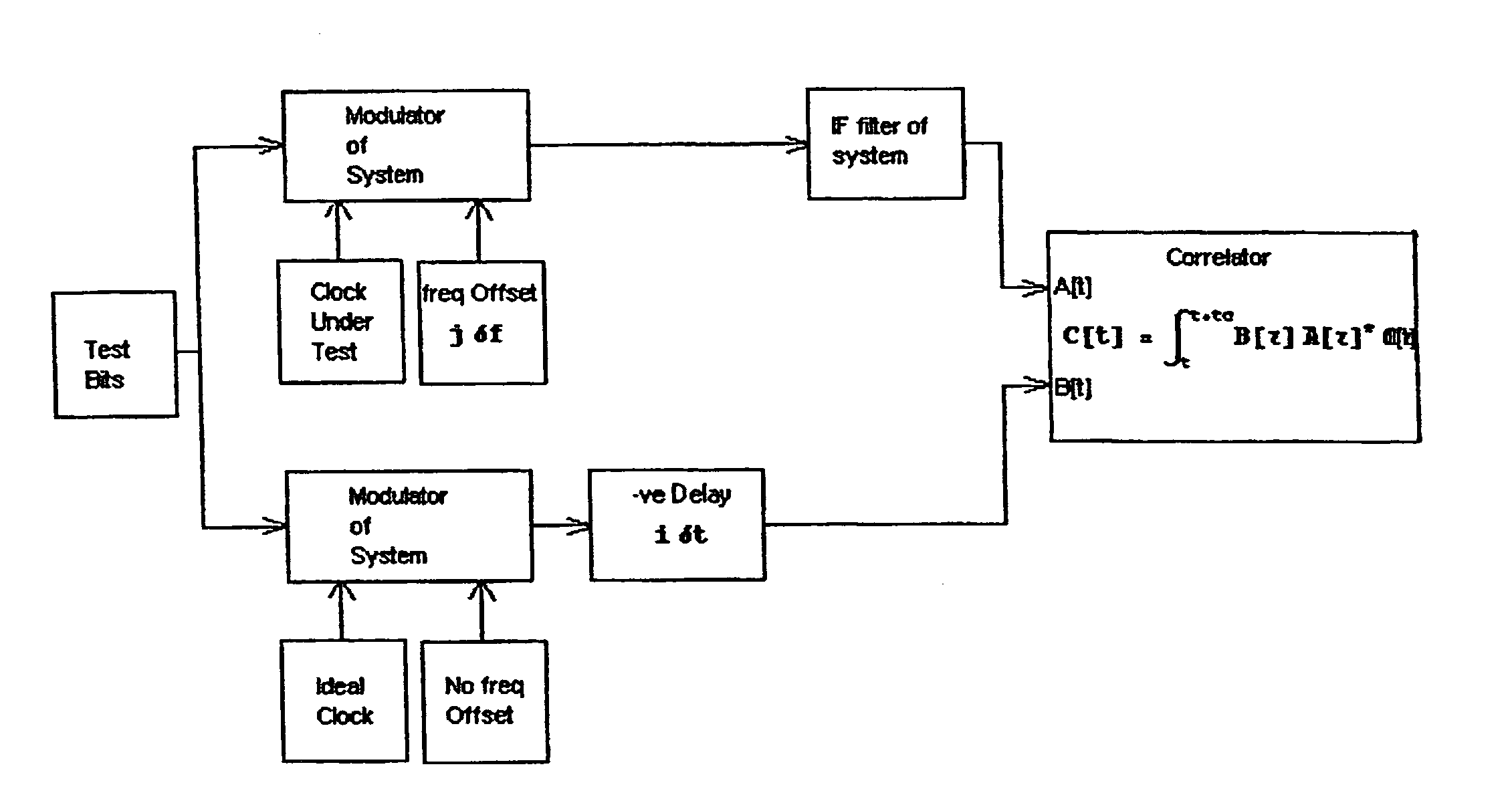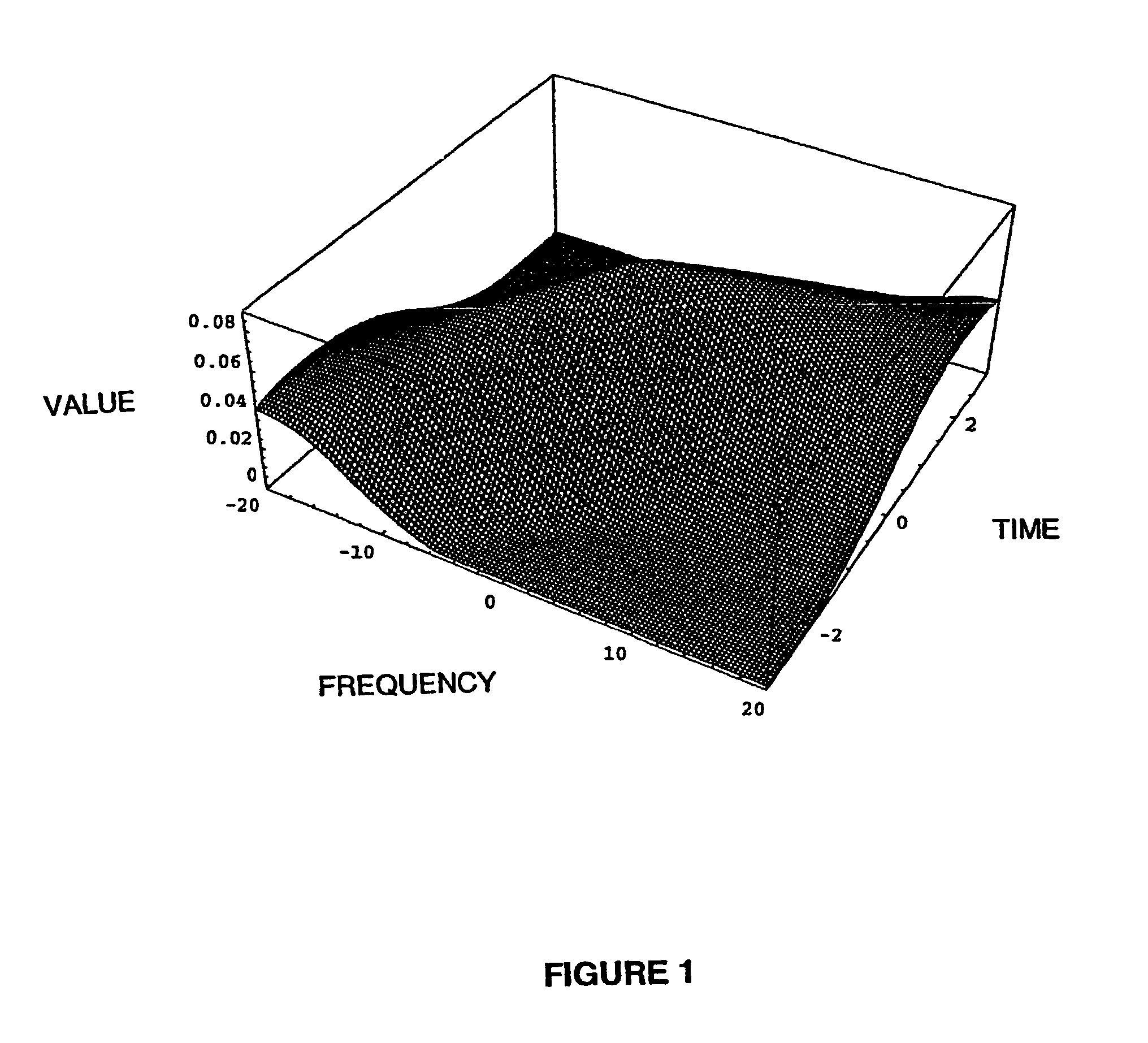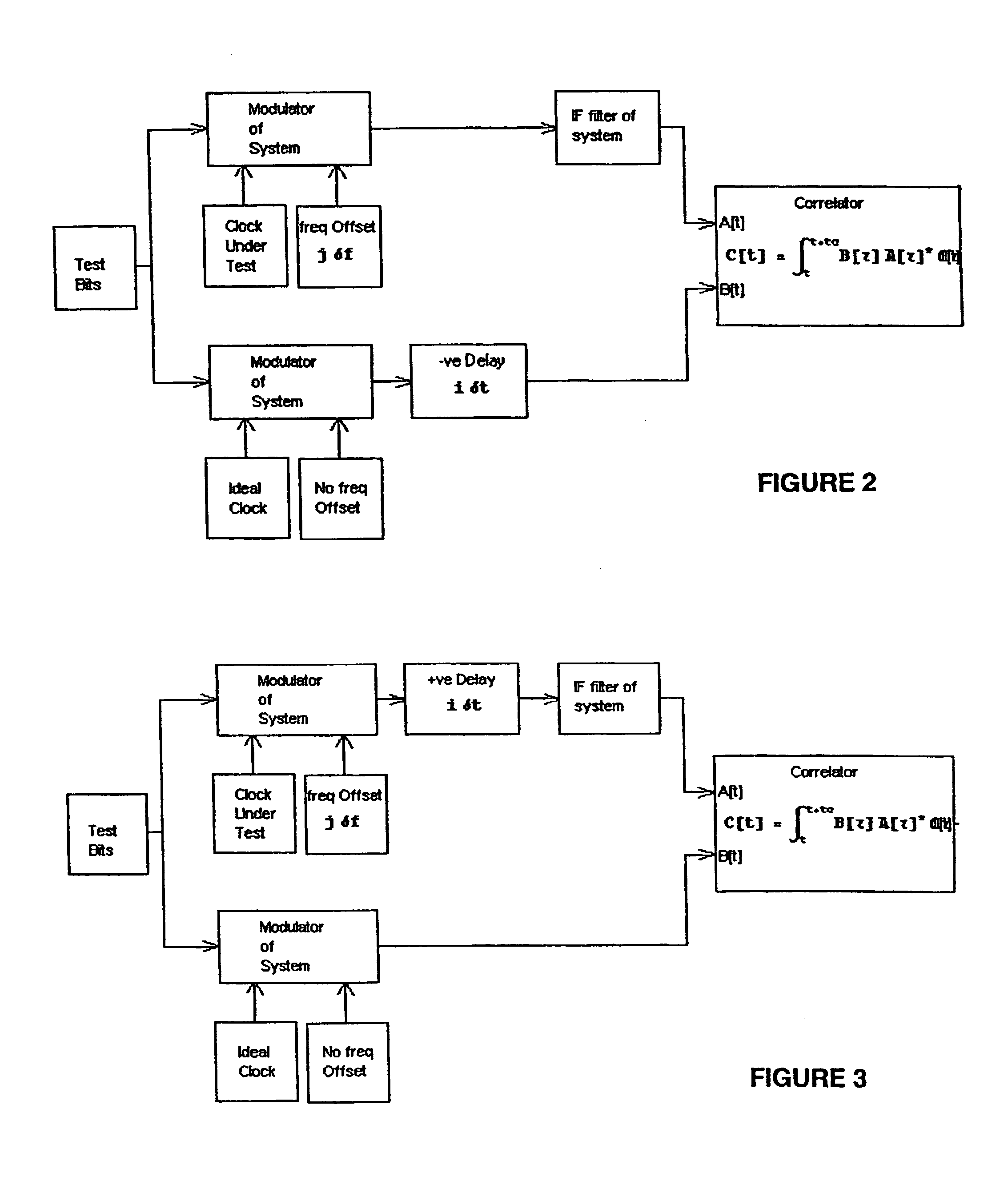Receiver for a spread spectrum system
a technology of spread spectrum and receiver, applied in the field of receivers, can solve the problems of common measurement errors in the creation of range measurements, and achieve the effects of improving the reception of transmitted signals and synchronisation thereof, reducing the number of errors, and improving the sensitivity of transmission signals
- Summary
- Abstract
- Description
- Claims
- Application Information
AI Technical Summary
Benefits of technology
Problems solved by technology
Method used
Image
Examples
example
[0110]The following example of a preferred implementation of the present invention in an example run in the computer program Mathematica 4.
[0111]One method that can be used for finding the values is given in the following example for
τ0
and
μ0
[0112]Any assumptions involved in the demonstration in that there exists exactly one path such that
−Δt[m]+ΔtRe[n]=0.4Tc
[0113]For all other paths it is assumed:
Abs[−Δt[m]+ΔtRe[n]]>3Tc
f−f0−Δf[m]=0.35 Hz
[0114]Let the strength
α[m]=0.8
[0115]Assume B[k]=1;
[0116]In the sequel, all the time units are in Tc, chip periods and all the frequencies are in Hz.
[0117]This assumption is consistent with the system tracking one path. Under these assumptions the following is arrived at:
Γ[n][μ, τ]=0.8 CorrelatingSurface [μ+0.35, τ+0.4]
[0118]For GPS the correlation surface function is calculated to be:
[0119]CorrelationSurface[{μ_,τ_}]:=1.0282397173771807‵-0.6561546163982793‵μ+0.16121834444658398‵μ2-0.041119148280990614‵τ+0.531238073030845‵μτ-0.567170671...
PUM
 Login to View More
Login to View More Abstract
Description
Claims
Application Information
 Login to View More
Login to View More - R&D
- Intellectual Property
- Life Sciences
- Materials
- Tech Scout
- Unparalleled Data Quality
- Higher Quality Content
- 60% Fewer Hallucinations
Browse by: Latest US Patents, China's latest patents, Technical Efficacy Thesaurus, Application Domain, Technology Topic, Popular Technical Reports.
© 2025 PatSnap. All rights reserved.Legal|Privacy policy|Modern Slavery Act Transparency Statement|Sitemap|About US| Contact US: help@patsnap.com



